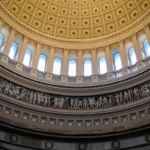Healthcare Case Law: Key Decisions and Their Policy Implications

Healthcare law is a complex and constantly evolving area, where legislative, regulatory, and judicial decisions converge to shape the landscape of healthcare delivery in the United States. As the healthcare system grapples with challenges related to access, affordability, quality, and patient safety, the role of case law in shaping healthcare policies cannot be overstated. Legal decisions made in courts have profound and far-reaching implications on the healthcare sector, from insurance policies to provider regulations, and from patient rights to public health initiatives.
National Federation of Independent Business v. Sebelius (2012)
Significance: NFIB v. Sebelius is one of the most pivotal Supreme Court cases in recent healthcare history. It upheld the core provisions of the Affordable Care Act (ACA), including the individual mandate and Medicaid expansion, and reinforced the government’s role in regulating healthcare.
- Ruling: The Court upheld the ACA’s individual mandate, which requires individuals to maintain health insurance or pay a penalty, under Congress’s power to levy taxes. It also ruled that the Medicaid expansion was optional for states, effectively allowing states to opt out without losing existing Medicaid funding.
- Impact on Policy: This decision had significant policy implications. The Court’s ruling on the individual mandate effectively made the ACA’s mandate a tax penalty rather than a legal requirement, easing concerns about federal overreach. Additionally, by making Medicaid expansion optional for states, the ruling allowed the issue of expanding Medicaid to remain a state-by-state decision, leading to uneven adoption of Medicaid expansion across the country.
Burwell v. Hobby Lobby Stores, Inc. (2014)
Significance: Burwell v. Hobby Lobby centered on whether for-profit companies could claim religious objections to certain provisions of the ACA, specifically the contraceptive mandate that required employers to provide birth control coverage in employee health plans.
- Ruling: The Supreme Court ruled in favor of Hobby Lobby, allowing closely held for-profit corporations to exempt themselves from providing contraceptive coverage based on religious beliefs, in line with the Religious Freedom Restoration Act.
- Impact on Policy: The decision expanded the scope of religious exemptions, particularly in the context of healthcare law. It had implications for the ACA’s preventive services mandate, altering how companies could approach healthcare coverage for employees. This ruling sparked debates on the balance between religious freedom and women’s healthcare access, influencing future challenges to the ACA and shaping policies on employee health benefits.
HHS v. Florida (2012)
Significance: This case dealt with the ACA’s Medicaid expansion and whether it overstepped federal powers by coercing states into accepting Medicaid expansion as a condition of receiving federal funding.
- Ruling: The Court ruled that the ACA’s Medicaid expansion provisions were unconstitutionally coercive because they threatened to withhold existing Medicaid funding from states that did not comply with the expansion.
- Impact on Policy: This ruling limited the scope of Medicaid expansion by making it optional for states. It allowed states to opt out without facing the loss of all federal Medicaid funds, creating a dichotomy where some states expanded Medicaid while others chose not to, leading to significant health coverage disparities between states.
American Hospital Association v. Becerra (2022)
Significance: This case revolved around the legality of Medicare reimbursement rates for hospital outpatient services. The Court considered whether the Department of Health and Human Services (HHS) could reduce the reimbursement rates for certain outpatient services provided by hospitals.
- Ruling: The Supreme Court ruled that the HHS did not have the authority to make significant reductions to reimbursement rates for outpatient services without following proper procedures.
- Impact on Policy: This ruling set a precedent for how the federal government must approach changes to healthcare reimbursement and pricing models. It emphasized the need for transparency and proper regulatory procedures when altering reimbursement rates, which is crucial for the financial stability of healthcare providers, particularly in the face of rising healthcare costs.
Department of Health and Human Services v. AHA (2020)
Significance: This case involved the government’s efforts to modify the method of reimbursement for prescription drugs under Medicare.
- Ruling: The Court upheld the government’s ability to change payment formulas for certain outpatient drugs under Medicare, which could lead to decreased costs for the program.
- Impact on Policy: The ruling highlighted the growing focus on reducing healthcare costs and modifying reimbursement structures. It set a precedent for how government policies might address the price of pharmaceuticals and the financial sustainability of Medicare and other federal programs.
End of Life Decisions: Cruzan v. Director, Missouri Department of Health (1990)
Significance: Cruzan v. Director focused on the right to refuse life-sustaining treatment, particularly in the case of a patient in a persistent vegetative state.
- Ruling: The Supreme Court ruled that family members could make decisions regarding life support for an incapacitated loved one, but only after clear and convincing evidence of the patient’s wishes had been established.
- Impact on Policy: This case established a key precedent for end-of-life decisions, affirming the right of patients (or their families) to make decisions about life-sustaining treatment. It influenced the development of living wills and advance directives, providing a framework for patients to express their wishes about end-of-life care.

Stay up to date on data privacy with Continuing Education of the Bar (CEB)
CEB provides a range of online services designed to enhance legal practice, including Practitioner, CEB’s all-in-one legal research solution with authoritative practice guides. Practitioner is meticulously crafted by California lawyers for California lawyers, providing comprehensive insights and resources tailored to your specific needs. All practice guides seamlessly integrate with CEB’s primary law research tool, empowering you to delve into California, Ninth Circuit Court of Appeals, and U.S. Supreme Court case law, alongside California statutes and the California Constitution. As part of the Practitioner subscription, you gain access to DailyNews, ensuring you stay updated on any critical new cases or developments in your field. And don’t forget, Practitioner also includes TrueCite®, CEB’s powerful case law citator, enhancing your research efficiency and accuracy.
Our tools offer unparalleled support in case law research, legal analysis, and staying updated with the latest judicial decisions. By choosing CEB, you gain access to a wealth of knowledge, enabling you to navigate complex legal landscapes with confidence and precision.
Read more related content
- California’s Proposed Antitrust Crackdown: SB 763 Penalties Could Jump from $1 Million to $100 MillionCalifornia’s Proposed Antitrust Crackdown: SB 763 Penalties Could Jump from $1 Million to $100 Million A $1 million penalty for California corporations found guilty of criminal antitrust charges could soon … Continued
- California Wildfire Legal Response: Executive Orders, CEQA Exemptions, and Rebuilding GuidelinesCalifornia Wildfire Legal Response: Executive Orders, CEQA Exemptions, and Rebuilding Guidelines The Los Angeles and Ventura County wildfires are, first and foremost, a human tragedy, displacing families, devastating communities and … Continued
- Navigating the Litigation Process in California: A Practitioner’s Handbook Litigation in California can be a complex and time-intensive process, requiring legal practitioners to have a thorough understanding of procedural rules, case law, and effective legal strategies. Whether representing plaintiffs … Continued



